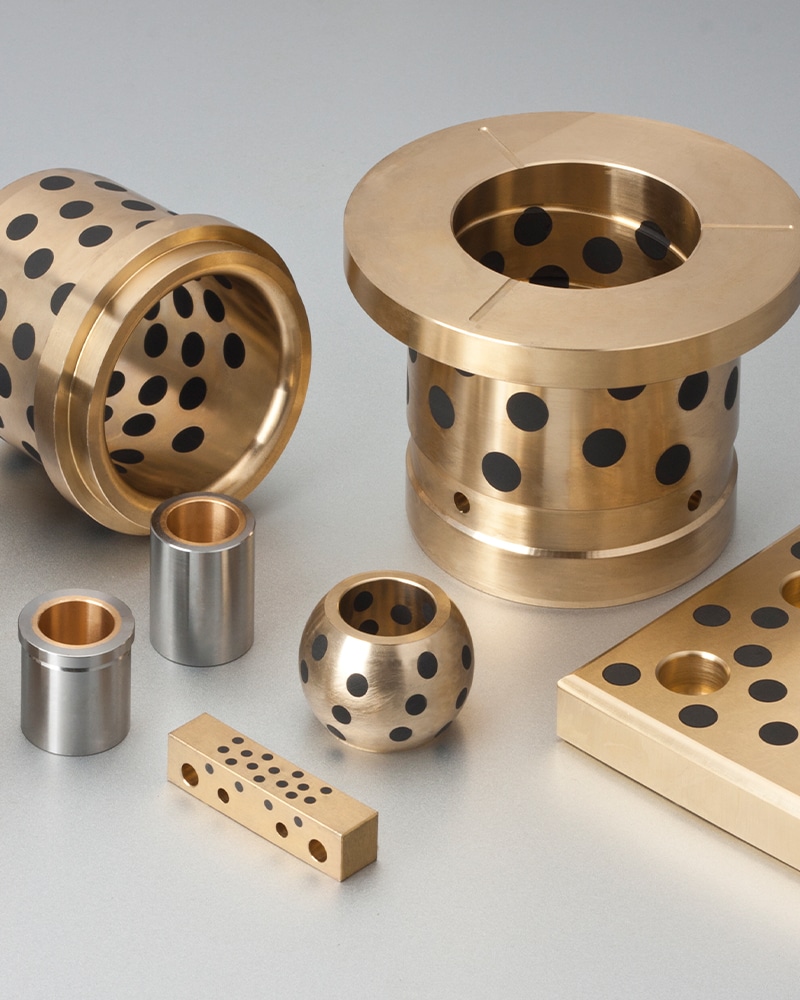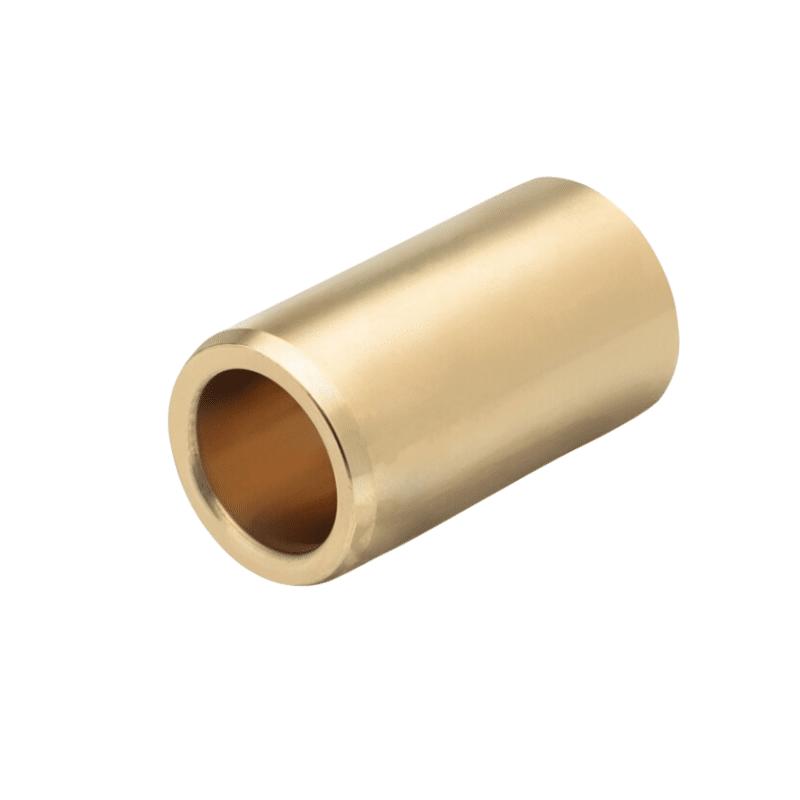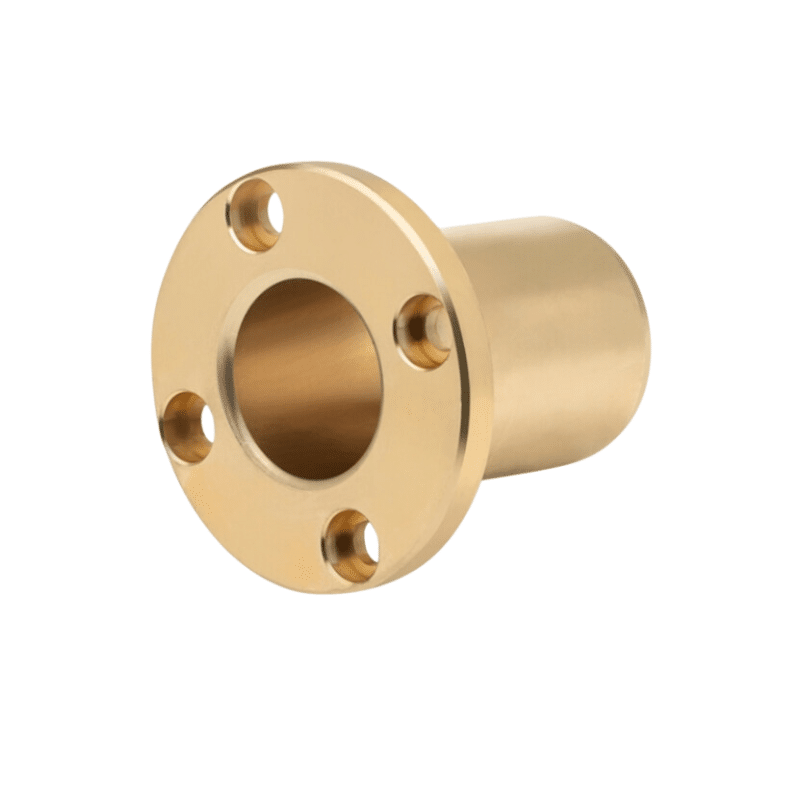Oilless Bearing Bronze Alloys: Characteristics and Selection Guide
Bearing Bronze Solutions – Tailored for Efficiency & Strength
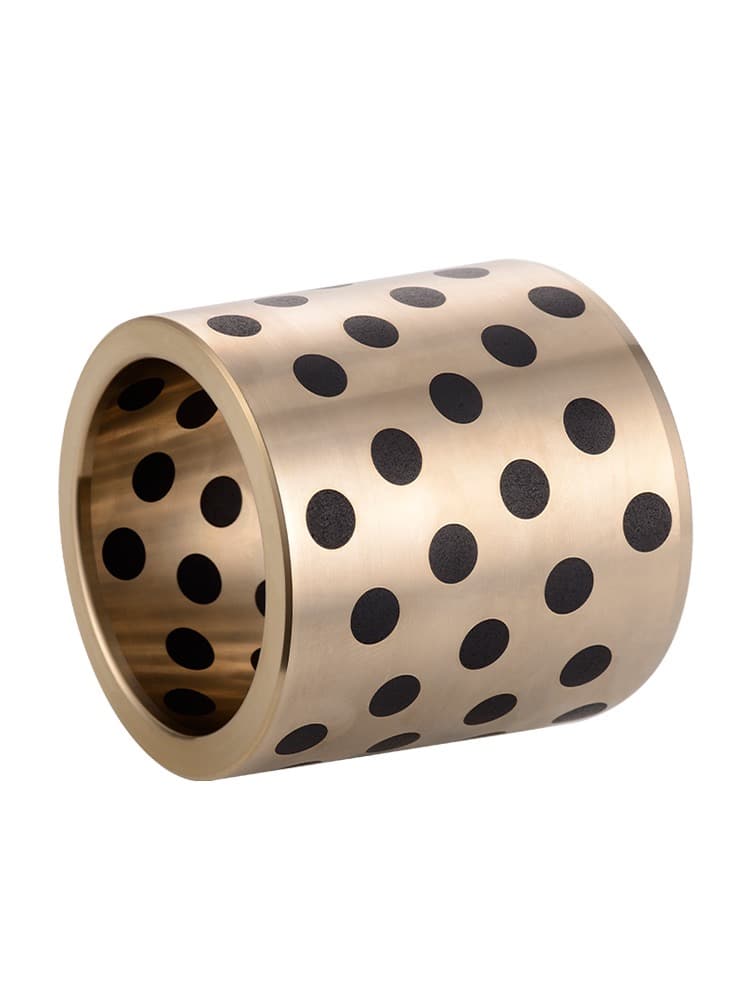
JDB – Bush Without Flange
Key Features of JDB Bush Without Flange
Self-Lubricating: Designed to operate without the need for external lubrication, making them suitable for applications where maintenance is challenging.
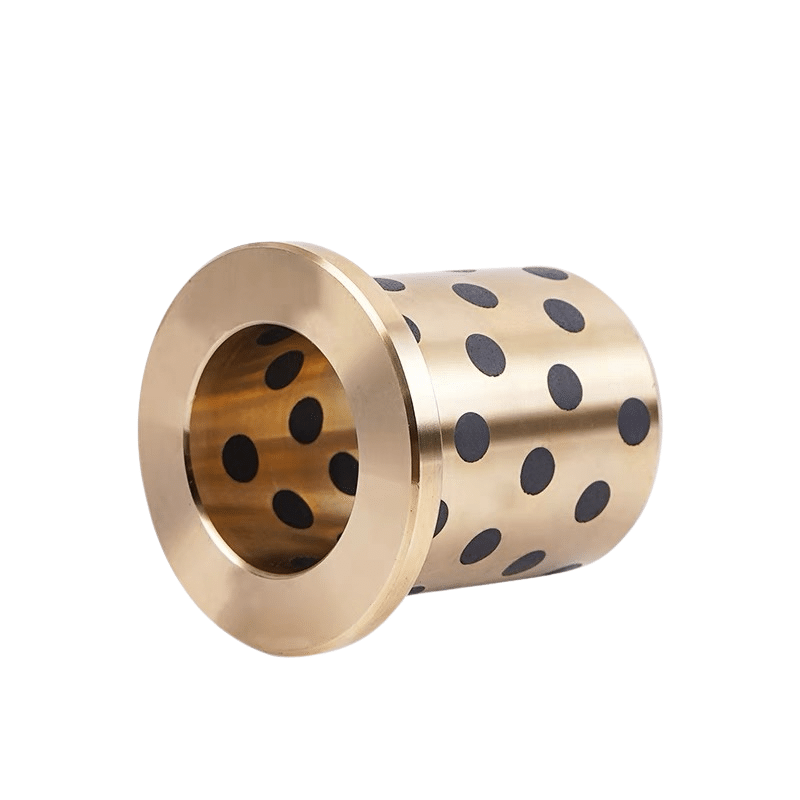
JFB – Bush with flange
JFB (Bush with Flange) is a type of self-lubricating plain bearing that includes a flange for additional support and positioning.
Design: JFB bushings feature a cylindrical body with an integrated flange at one end. This design provides better load distribution and helps in positioning the bearing within assemblies.
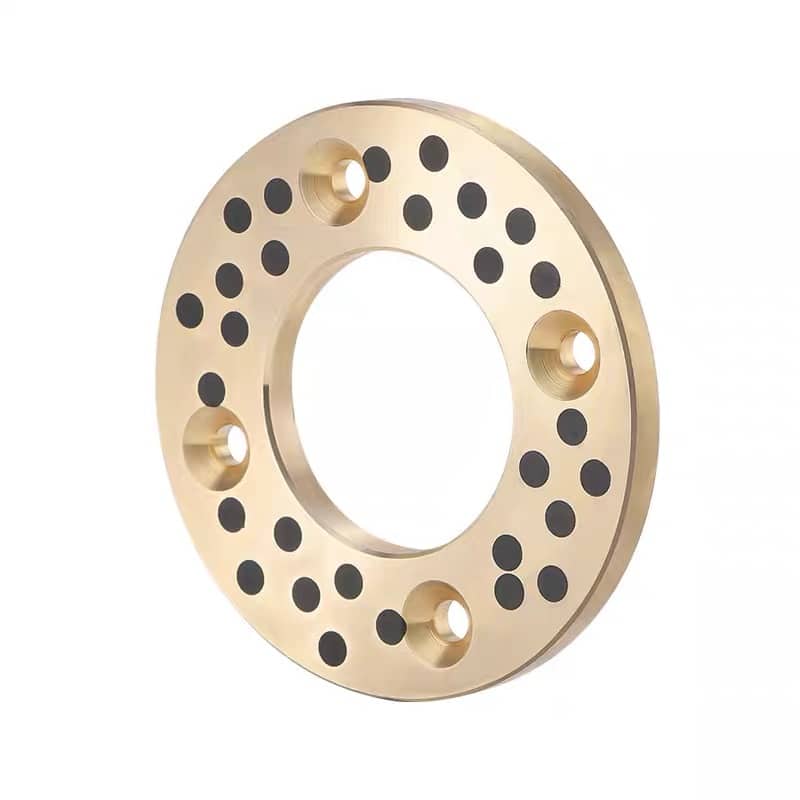
JTW – Washers Design and Material:
JTW (Thrust Washers) are self-lubricating components designed for use in various industrial applications.
Made of high-strength brass or bronze alloy base material
Embedded with solid lubricants like graphite or molybdenum disulfide (MoS2)
Available in various sizes to suit different applications
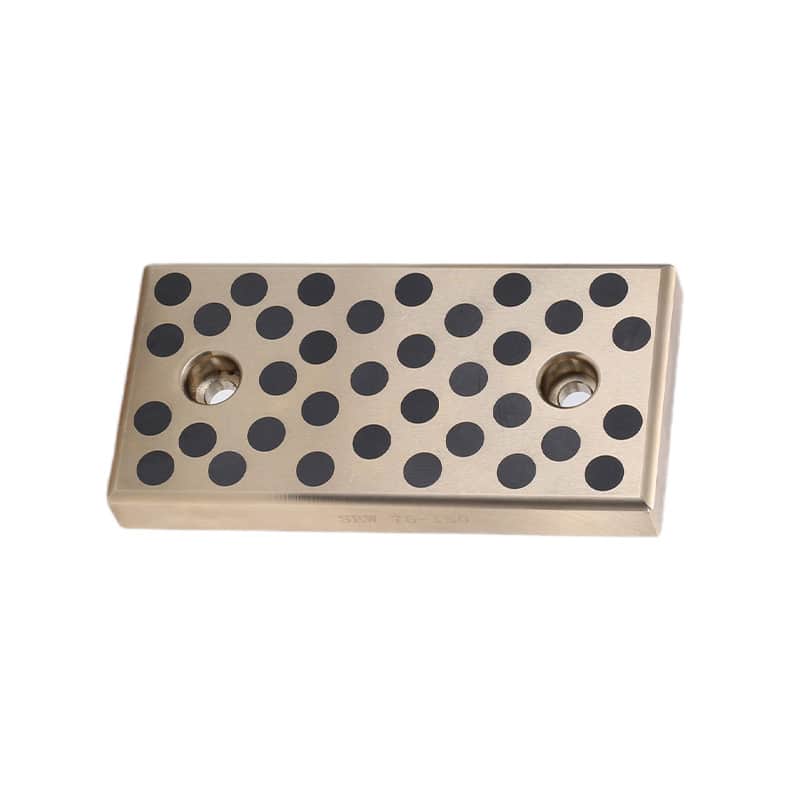
JSP- Sliding plate
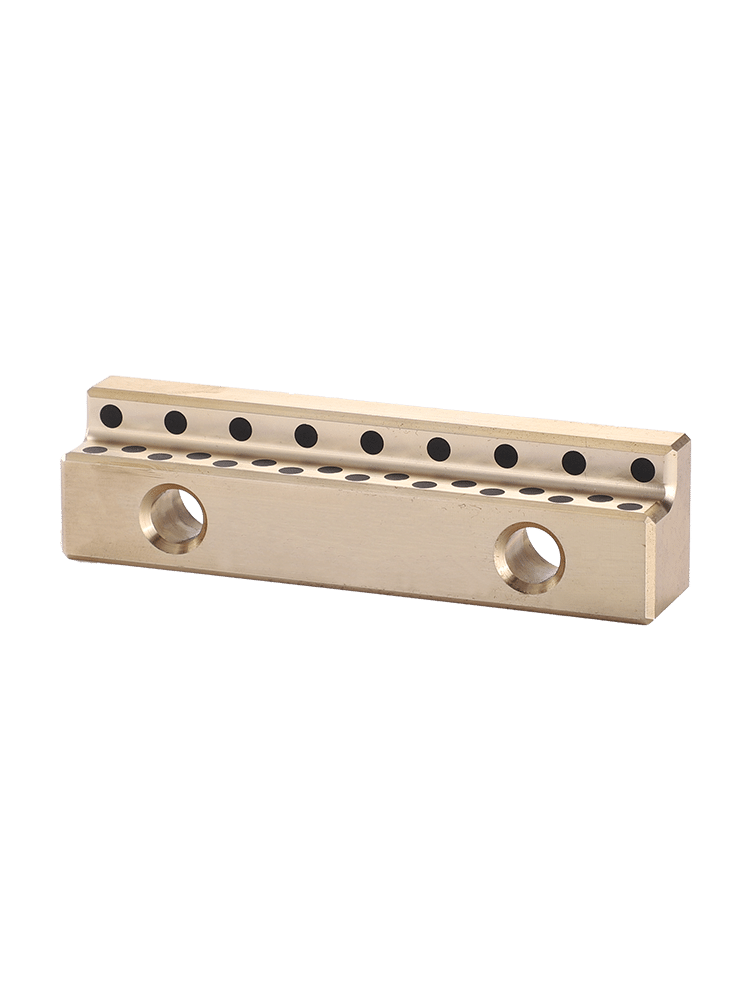
JSL – L-type bar Design:
L-shaped configuration, also referred to as an angled guide gib
Available in various sizes and dimensions to suit different applications
Maintenance-free operation due to self-lubricating properties
High precision and reliability
Suitable for challenging operating conditions
Type Of Bearing
oilless bearings Customization:
Can be manufactured to specific customer requirements
Available in various alloy compositions (e.g., CuZn25A16Fe3Mn3, SAE 660 bronze)
highly wear-resistant Oilless Bearings JDB material
JDB materials consist of a highly wear-resistant copper cast alloy, with the sliding surfaces evenly embedded with a specific percentage of solid lubricant plugs tailored to the working conditions. The high-strength copper alloy offers substantial load-bearing capacity, while the solid lubricant ensures the formation of a low-friction film during technical dry running conditions. The bearing surface is designed with a thick running-in film, allowing the solid lubricant to transfer to the counter material upon initial contact.
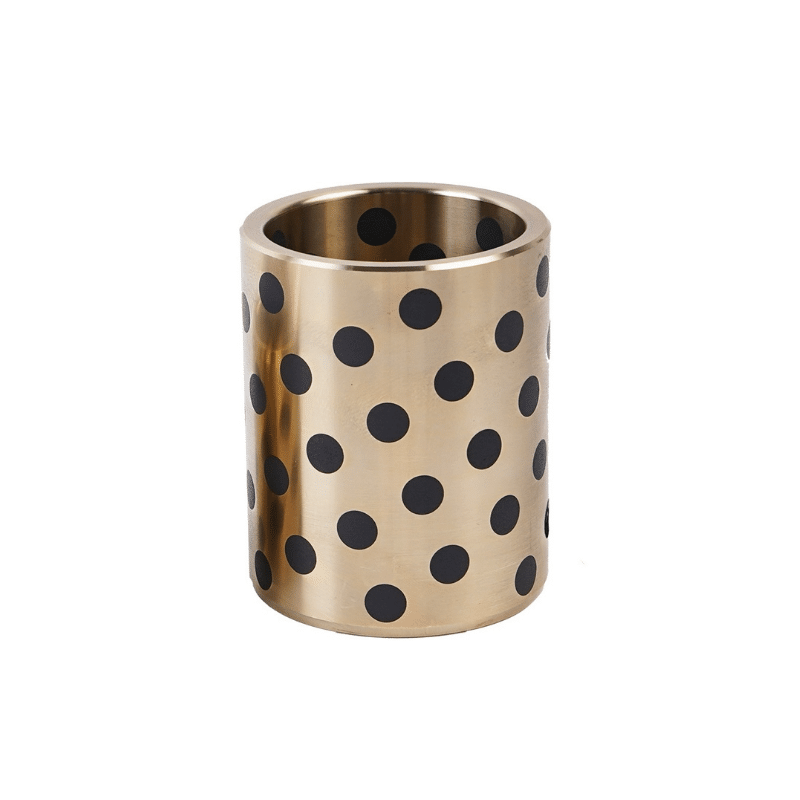
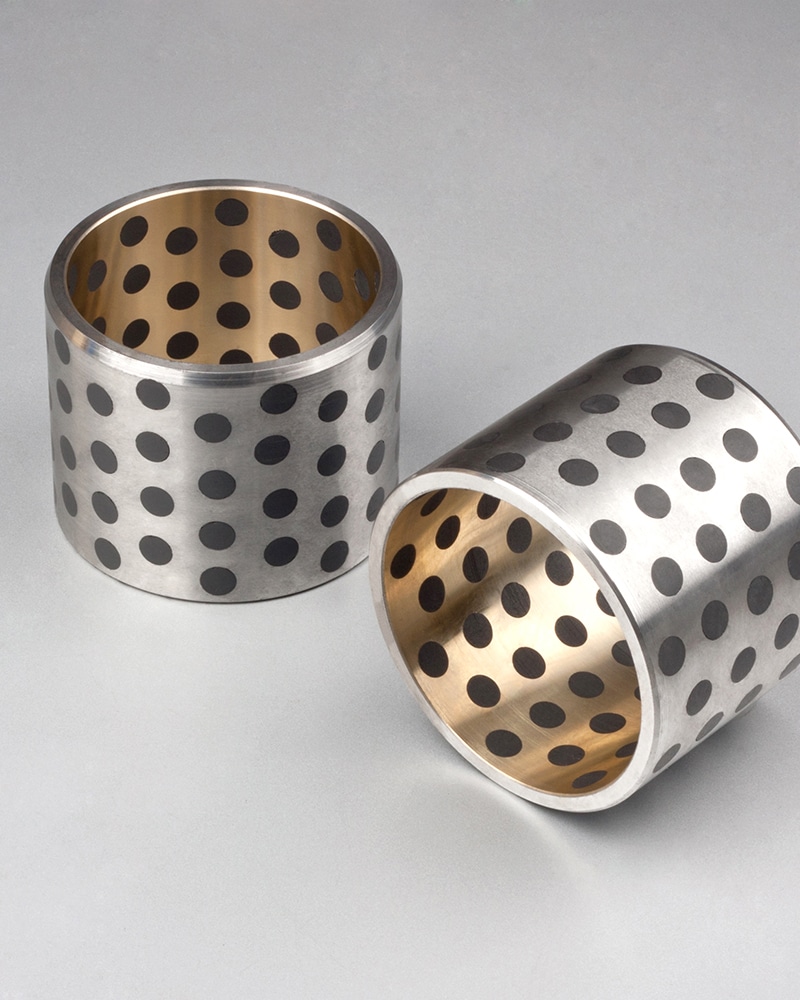
custom manufacturing of Oilless bearings metallic self-lubricating bearing
Modern applications place significant demands on self-lubricating bearing materials, requiring them to operate maintenance-free, even under harsh conditions and extreme loads. Additionally, there is a continuous push to reduce costs while increasing machine and plant availability without compromising reliability. Oilless bearings metallic self-lubricating bearing materials are engineered to be maintenance-free and self-lubricating over long-term use, facilitating the design of dependable, long-term self-lubricating systems. These materials are versatile, suitable for a wide range of applications involving low-speed, high-load conditions such as rotational, swinging, and linear reciprocating motions. Furthermore, these bearings are ideal in environments where traditional lubrication methods are unsuitable or prohibited, or in special conditions such as those involving dust, radiation, and impact loads where long-term stability and reliability are essential.
The Future of Bearing Bronze in Engineering and Design
About us
Custom Parts Services and Prototyping!
Special Bronze Alloys And Aluminium Bronze Bearing, Search Our Material Alloy
Solid-Lubricant-Embedded Bearing
Self-lubricating bearings are designed for use in situations where there is little to no lubrication during operation. Our focus is on ensuring optimal performance and longevity under various conditions. The operational principle of these bearings involves the creation of a solid lubricating film during the initial run-in period. This film forms when a small amount of material from the bearing layer, which is in direct contact with the moving parts, transfers to these parts. This protective layer helps to lubricate the mating components, thereby extending the lifespan of both the bearing and the shaft.
| Type | Material | ||||||
|---|---|---|---|---|---|---|---|
| China Brands GB1776-87 |
ZCuZn25 AL6Fe3Mn3 |
ZCuSn6Zn6Pb3 | ZCuAL10Fe3 | ZCuSu10P1 | Steel+ ZCuSn6Zn6Pb3 |
HT250 | GCr15 |
| Intemational ISO1338 |
GCuZn25 AL6Fe3Mn3 |
GCuSn6Zn6Pb3 | GCuAL10Fe3 | – | Steel+ CuSn6Zn6Pb3Fe3Ni5 |
– | B1 |
| Germany DIN |
G-CuZn25 AL5 |
GB-CuSn5Zn5Pb5 | GB-CuAL10Ni | GB-CuSn10 | Steel+ CuSn6Zn6Pb3Ni |
– | 100Cr6 |
| Japan JIS |
HBsC4 | BC6 | ALBC3 | BC3 | BC6 | FC250 | SUJ2 |
| America ASTM/UNS |
C86300 | C83600 | C95500 | C90500 | C83600 | Class40 | 52100 |
| England Standard BS |
HTB2 | LG2 | AB1 | PB4 | LG2 | – | – |
| Grade | ||||||||
|---|---|---|---|---|---|---|---|---|
| Material | CuZn25Al5Mn4Fe3 | CuSn5Pb5Zn5 | CuAl10Ni5Fe5 | CuSn10Pb1 | CuSn7ZnPb | CuSn12Pb | CuZn25Al5Mn4Fe3 | |
| Density | 8 | 8.9 | 7.8 | 8.9 | 8.8 | 8.9 | 8 | |
| Hardness | > 210 | > 70 | > 140 | > 80 | > 75 | > 95 | > 250 | |
| Tensile strength | N/mm | > 750 | > 200 | > 600 | > 330 | > 270 | > 260 | > 800 |
| Yield strenght | N/mm2 | > 450 | > 90 | > 260 | > 170 | > 130 | > 150 | > 450% |
| Elongation | % | > 12 | > 15 | > 10 | > 6 | > 16 | > 10 | > 8 |
| Coefficient of linear expansion | 1.9X10-5/℃ | 1.8X10-5/℃ | 1.6X10-5/℃ | 1.8X10-5/℃ | 1.8X10-5/℃ | 1.8X10-5/℃ | 1.9X10-5/℃ | |
| Max.temp. | ℃ | -40~+300 | -40~+400 | -40~+400 | -40~+400 | -40~+400 | -40~+400 | -40~+150 |
| Max.load | N/mm2 | 100 | 60 | 50 | 70 | 70 | 70 | 120 |
| Max.speed (Dry0) | m/min | 15 | 10 | 20 | 10 | 10 | 10 | 15 |
| Max.PV(Lubrication) | N/mm2 *m/min | 200 | 60 | 60 | 80 | 60 | 80 | 200 |
| Compression deformation | 300N/mm2 | < 0.01mm | < 0.05mm | < 0.04mm | < 0.05mm | < 0.05mm | < 0.05mm | < 0.005mm |
Applications of Oilless Bearings:
Heavy-Duty and Low-Speed Mechanisms:
- Hinge bearings
- Accidental gate bearings
- Turbine bearings for dam gates
High-Temperature Environments:
- Steel works
- Metallurgical equipment
- Rolling machines
- Conveying rollers
- High-temperature blowers
- Baking furnaces
Automobile Industry:
- Stamping molds for coven
- Assembly lines
- Conveyor belts
Other Industrial Uses:
- Engineering machinery
- Plastic injection machines
- Various high-precision molds
Special Conditions:
- Applications requiring corrosion resistance and water submersion
- Heavy-duty and low-speed functions where oiling is not possible, such as in:
- Chemical machinery
- Food processing machinery
- Paper manufacturing machinery
- Textile printing and dyeing machinery
Maintenance Free, non-standard part Bearing Bronze Components
In hac habitasse platea dictumst nam quam nunc, blandit vel, luctus pulvinar.


